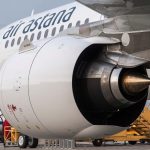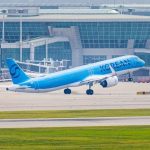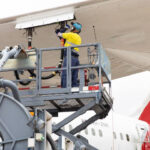The report, ‘European SAF Industrial Policy: Ensuring the competitiveness of European aviation, energy and connectivity’, was commissioned by Airlines for Europe (A4E), the European region of Airports Council International (ACI Europe), Airport Regions Council (ARC), European Regions Airline Association (ERA), the General Aviation Manufacturers Association (GAMA) and ASD Europe, representing the aerospace, security and defence industries.
“The SAF market is accelerating, but current projections fall short of ambitions,” says the report. “The Clean Industrial Deal and the Sustainable Transport Investment Plan have an opportunity to address these challenges, attracting investment to the EU, improving energy security and ensuring climate targets are met.”
A key concern of the report – described by the industry coalition as “a SAF toolkit” – is the advancement of industrial strategies in other markets, specifically the US and China, which support SAF production through various incentives or cost advantages such as low-cost energy or loans and create what ICF calls “an unequal competitive market challenging EU SAF production.”
The report also highlights as threats to the EU SAF sector a global shortage of HEFA feedstocks, such as used cooking oils and tallow, Europe’s slow support for new SAF pathways such as carbon capture and recycling, and its rejection of fuels developed from crop feedstocks including corn and soybeans.
“If this trend continues, increasing quantities of SAF are likely to be imported to meet the EU’s mandates, undermining its attempts to attain energy independence,” it observes.
“On top of this, consumers will end up bearing extra costs for more expensive SAF and an increasing share of jobs will be created in other countries, further undermining Europe’s competitiveness.”
ICF has forecast three policy-driven growth trajectories for the global SAF sector by 2030, ranging from a low scenario of 8.1 million tonnes (Mt) to a central estimate of 15.2 Mt and a high of 30.6 Mt, the latter assuming that all proposed projects and procurement commitments proceed.
It has also estimated that by 2030, under the central growth scenario, SAF production will reach 16.3 Mt, slightly ahead of demand projections, compared with 1 Mt produced in 2024.
“As SAF evolves into a global industry, it will redistribute energy production, create thousands of skilled jobs and significantly reduce emissions from the aviation industry,” says the report.
It highlights a global SAF market with a forecast value of almost €15 billion ($15.5bn) by 2030, and says the sector would need cumulative investment of up to €3.7 trillion by 2050, “overcoming challenges across technology, market risks and feedstock access.”
It adds: “The EU has built a sophisticated framework to support SAF demand. The ReFuelEU Aviation Regulation mandates fuel suppliers to blend increasing volumes of SAF into the EU’s jet fuel supply, with a sub-mandate for synthetic SAF produced from low-carbon electricity.
“The ETS increases the cost for fossil fuel emissions, complemented by measures under the Renewable Energy Directive, taxonomy and other initiatives.”
But the report warns of SAF market volatility in Europe, caused by policy-driven demand swings and slow supply responses, creating uncertainty for potential investors and impeding the sector’s growth.
“The combined price uncertainty, technology risks and policy risks have held back investments, risking that obligated parties will fail to meet the mandate. In this worst-case outcome, costs are driven up for consumers, with no environmental benefit. The EU should implement additional measures to break this standoff, unlock private investments and ensure advanced SAF technologies can scale to meet the required volumes, while maintaining aviation connectivity at an appropriate price.”
ICF also singles out the slow development in EU countries of advanced SAF technologies such as synthetic fuel and urged acceleration to avoid over-reliance on a handful of pathways such as HEFA.
“Additional technologies must be developed to enable the use of more scalable and sustainable feedstocks and ensure the industry can continue scaling as used cooking oils and tallows become increasingly difficult to access.
“Synthetic SAF is struggling to attract investment due to high costs of green hydrogen, carbon capture and renewable energy. While the EU sub-mandate creates market demand, capital remains scarce due to technology risks, policy uncertainties and potential competition from lower-cost overseas producers.
“Sustainable aviation fuel isn’t just the key to decarbonising aviation in the short term, it’s an opportunity for Europe to establish itself as a global leader in a new form of energy.”
The report concludes: “The competition is intense and the choice is clear. If policymakers step up and implement the measures in this report, Europe can lead the transition to decarbonised aviation, increase its energy independence and enhance its competitiveness.”
Photo (AIQBE): Moeve (formerly Cepsa) supplied over 18,000 cubic metres of SAF in 2024 to European airlines, produced at the La Rábida Energy Park in Palos de la Frontera, Spain














More News & Features
LanzaJet and KMG agree to progress SAF production project in Kazakhstan
SkyNRG says e-SAF and carbon removals should not be competing strategies for aviation decarbonisation
South Korea announces mandatory SAF blending for departing international flights from 2027
Catagen launches SAF production company and signs offtakes with Ryanair and Shell
Australia announces A$1.1bn incentive scheme to drive local production of low carbon fuels including SAF
Oneworld airline partners join with Breakthrough Energy Ventures to invest in new SAF technologies